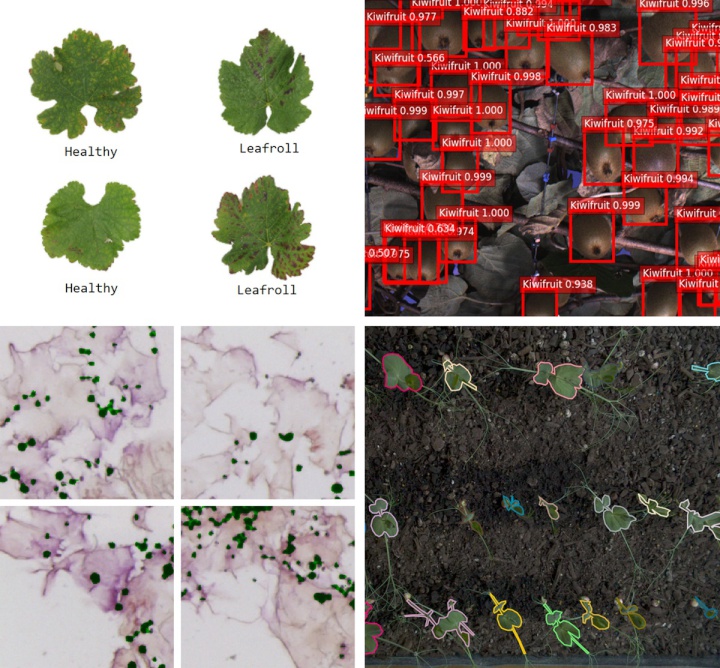Science staff on lockdown crowd-source image labeling skills

Like millions of New Zealanders, the majority of Plant & Food Research staff have been staying within their bubble away from the labs, but it does not stop them from contributing to science, one puppy or kitten image at a time.
More than 55 volunteer staff members, from scientists to student researchers, have stepped up to answer a call from the Data Science Group that is developing machine learning algorithms for research or industry use. Like facial recognition, the end goal is to train machines that can detect and measure objects such as flowers, fish, insects and fruit. Google uses a similar technology to train its self-driving cars to identify traffic signs and vehicles.
“In the research that we do, a lot of man power is wasted on manually identifying, counting and measuring plants, insects or seafood,” says Dr Linley Jesson, Group Leader for Data Science at Plant & Food Research. “If we can train machines to do that for us, it can speed up the process and give scientists more time to analyse the data.”
To train the computer, humans are still needed to show the correct objects to be identified. Initially Dr Jesson had expected fewer than 10 people to volunteer, but the overwhelming response took her by surprise. The volunteers are asked to attend a half-hour video training to learn how to use the platform. Then they practice with images of kittens and puppies before being assigned to a project, where the scientist in charge instructs them on what to look for.
In the last two weeks, these volunteers have already analysed thousands of images and videos for annotation projects in kiwifruit development, pea leaf area detection, watermelon pollen counting, fish detection and identification, grapevine growth measurement and disease detection, pear disease detection, and blueberry flower counting. More projects are to come.
ends


 Raise Communications: NZ Careers Expo Kicks Off National Tour Amid Record Unemployment
Raise Communications: NZ Careers Expo Kicks Off National Tour Amid Record Unemployment Hugh Grant: How To Build Confidence In The Data You Collect
Hugh Grant: How To Build Confidence In The Data You Collect Tourism Industry Aotearoa: TRENZ 2026 Set To Rediscover Auckland As It Farewells Rotorua - The Birthplace Of Tourism
Tourism Industry Aotearoa: TRENZ 2026 Set To Rediscover Auckland As It Farewells Rotorua - The Birthplace Of Tourism NIWA: Students Representing New Zealand At The ‘Olympics Of Science Fairs’ Forging Pathway For International Recognition
NIWA: Students Representing New Zealand At The ‘Olympics Of Science Fairs’ Forging Pathway For International Recognition Coalition to End Big Dairy: Activists Protest NZ National Dairy Industry Awards Again
Coalition to End Big Dairy: Activists Protest NZ National Dairy Industry Awards Again Infoblox: Dancing With Scammers - The Telegram Tango Investigation
Infoblox: Dancing With Scammers - The Telegram Tango Investigation